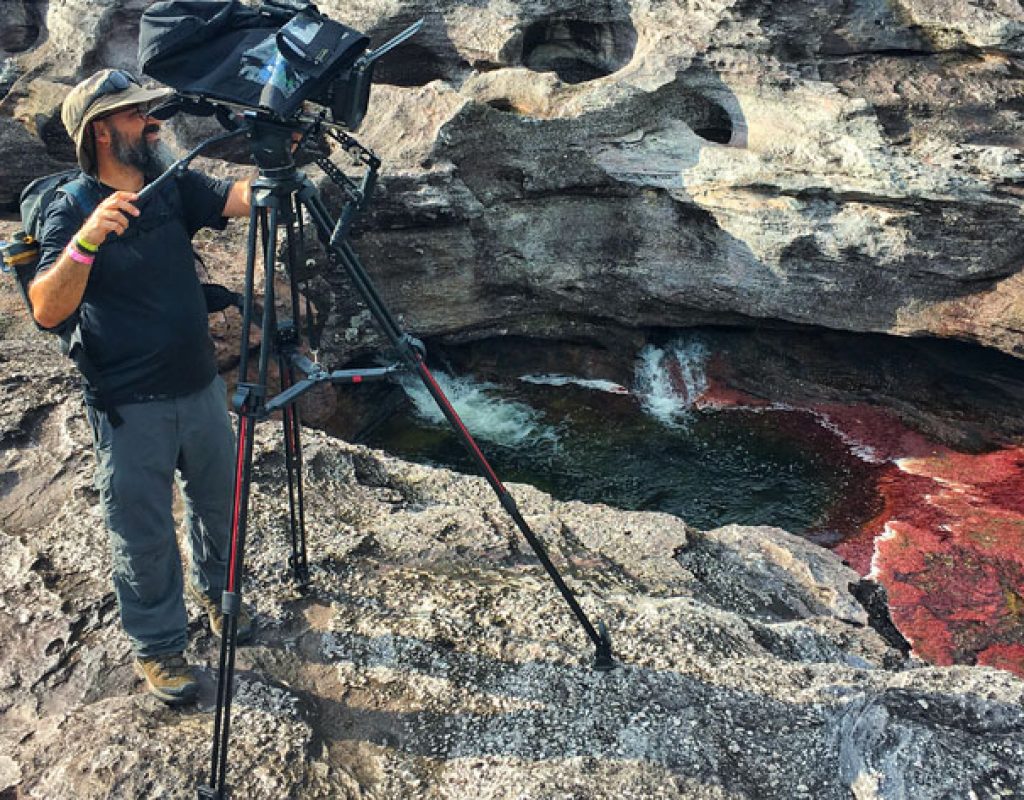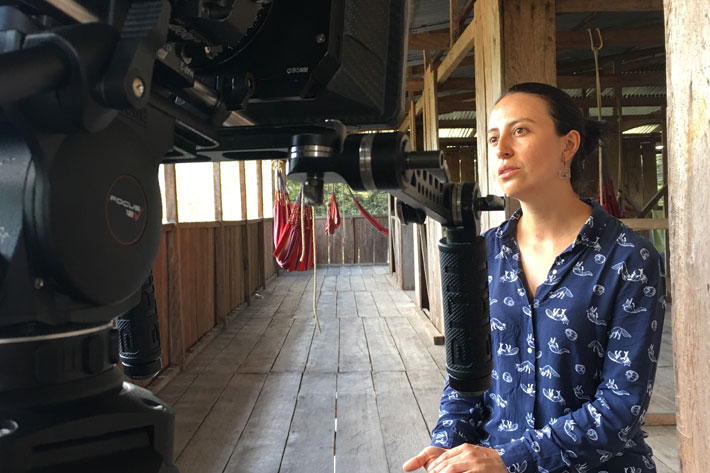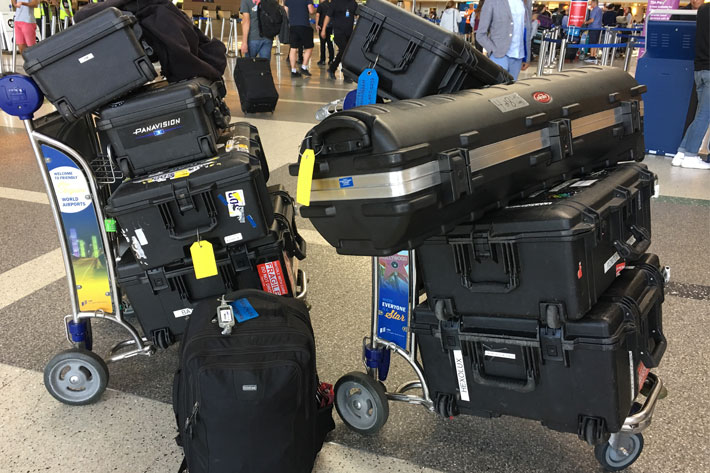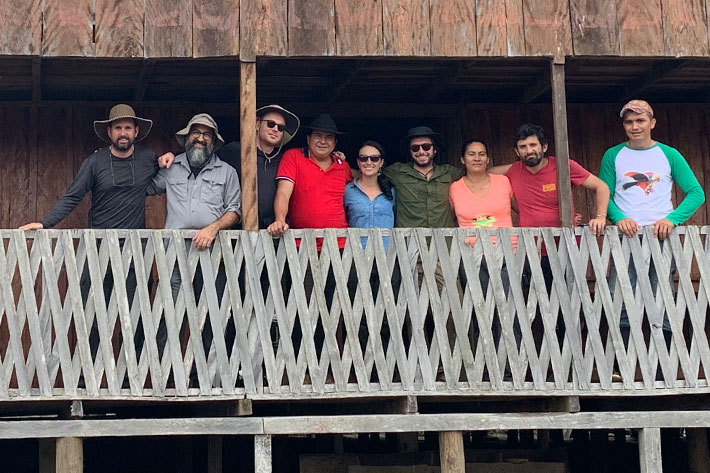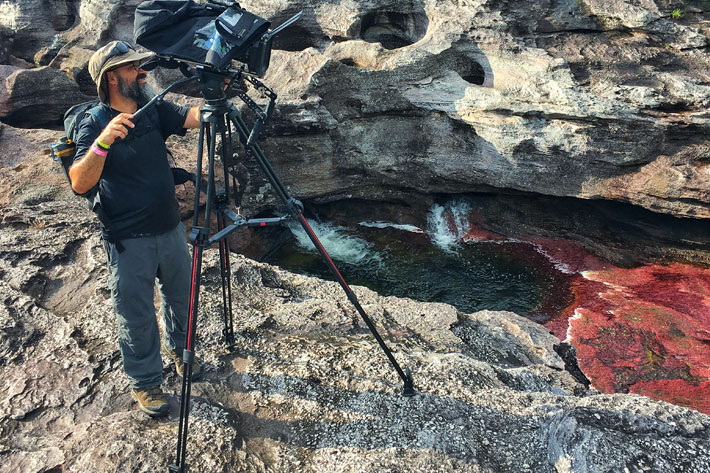
Cinematographer Michael Moghaddam and his crew embarked on a video mission to study the effects of deforestation deep in the Amazon rain forest in Colombia and how AI can help field biologists.
Scientists have used camera traps for years, to capture unique images of wildlife in the forests of the world, but its only now, with the use of AI, that many of those collections of stills or video become more than data gathering dust in hard-drives. The Wildlife Insights platform, recently launched, streamlines conservation monitoring by speeding up camera trap data analysis. Researchers who have camera trap data can now upload them to the Google Cloud-based platform, where they can manage, identify and analyze their biodiversity data. Researchers can also run AI models over their data for species identification. Using Google’s open source TensorFlow framework, Google has trained AI models to perform two tasks.
https://youtu.be/zsiTx5qjn7c
Google’s association with the Wildlife Insights platform explains the interest Google had in the production of a documentary, and that’s how EYES IN THE FOREST: Saving Wildlife in Colombia Using Camera Traps and AI was born. The film documents scientists’ use of Artificial Intelligence and technology to study the effects of deforestation on wildlife and the ecosystem. According to a recent UN report, as many as one-million species could be extinct within a decade if the tide of deforestation is not stemmed.
Camera traps, the eyes in the forest
The documentary follows the journey of field biologist Angélica Diaz-Pulido from Instituto Humboldt and Jorge Ahumada, a conservation biologist of Conservation International, as they visit the renowned rainbow river in remote Colombia, on a mission to understand, using camera traps – their “eyes in the forest” -, the beautiful wildlife in remote areas of Colombia.
For a long period of time, due to conflict, scientists have not been able to visit many area of the megadiverse country that Colombia is. Since the demobilization of the FARC in 2017, biologists have been able to re-enter areas they could not visit before, and what they discover is not what they expected. The drastic changes in the areas that were previously studied is a warning to Humanity about the need to stop and rethink our relation with Nature.
The documentary EYES IN THE FOREST: Saving Wildlife in Colombia Using Camera Traps and AI shows us the efforts made by scientists to change the course of things, and how the Wildlife Insights platform can help to streamline the work of biologists like Angélica, applying technology and Google’s AI to monitor wildlife. Artificial intelligence helps reduce the laborious manual work of sifting through volumes of camera trap images and helps biologists devote their time to actually working to study and protect wildlife. Michael Moghaddam and his team interviewed the scientists using camera traps to track wildlife in the forest.
The gear used for the documentary
Cinematographer Michael Moghaddam and his crew had a goal: to produce high quality video, even if working amid the most primitive conditions. Despite the tough conditions, the necessity for high-quality gear was paramount. Even without the luxury of a reliable generator, Moghaddam still brought the most sophisticated gear available from brands as Cartoni tripods, Hawk-Woods, and Kinotehnik, distributed in US by Manios Digital.
The crew filmed on two ARRI Alexa Mini cameras, the same brand of power-hungry digital cinema cameras used by many Oscar-nominated filmmakers. To support the cameras, Moghaddam chose the Cartoni Focus 12 SDS tripod, which was lightweight and robust enough to tote through the jungle, yet efficient enough to set up quickly and get smooth, steady once-in-a-lifetime shots. The Focus 12 fluid head features a continuously variable counterbalance system and a 100mm bowl base, which provides enough support for larger cameras while supporting a payload of 26 pounds.
“We needed to be as light and self-contained as possible,” Moghaddam said. “But at the same time, if the tripod is not solid, there are going to be issues. In fact, our “B” camera operator ended up bringing his tripod, which was a competitor to the Cartoni. We would joke around about how bad his set up was compared to mine. The sticks were okay but the competitor’s head was total garbage, even though it said it could support the same payload as the Cartoni. We found that whenever we went with one set-up, we would go with the Cartoni.”
Tracking the jaguars
“It was definitely pretty ambitious,” Moghaddam said of the project. “Where we were staying in the jungle was an old farmhouse that you know didn’t have electricity. We had a generator that we got to run for two hours a day to power our batteries. It was all open air. We slept under bug nets.There was an outhouse and well water. We were definitely really in it.”
EYES IN THE FOREST reveals how human greed has changed the Amazon forest in Colombia. The peace treaty forged between the government and the FARC in 2017 created a free-for-all for individuals and groups to go in and slash and burn swaths of the jungles. “If you can clear a part of the land and you can show to the government, then it’s yours and the government will give it to you,” Moghaddam said.
The scientists in the region who were studying the biosystem gave the film crew free rein and were available for candid interviews. Moghaddam cited field biologist Angélica Diaz-Pulido, whose research focused on tracking jaguars, considered an apex predator, which is a predator at the top of the food chain. Angélica Diaz-Pulido research showed that if you track the Apex predator, it will tell you about everything else about the environment. That’s because if there is not enough food for the main predators and they leave the environment that means the whole environment is out of whack, Moghaddam said.
Through his video, EYES IN THE FOREST: Saving Wildlife in Colombia Using Camera Traps and AI, Moghaddam tried to showcase the biodiversity of the region and the harmful effects of deforestation on the entire region. “The director tried to approach it more journalistically but we definitely tried to, you know, make it more cinematic I guess and more than just a typical news piece,” Michael Moghaddam Moghaddam said.

Filmtools
Filmmakers go-to destination for pre-production, production & post production equipment!
Shop Now